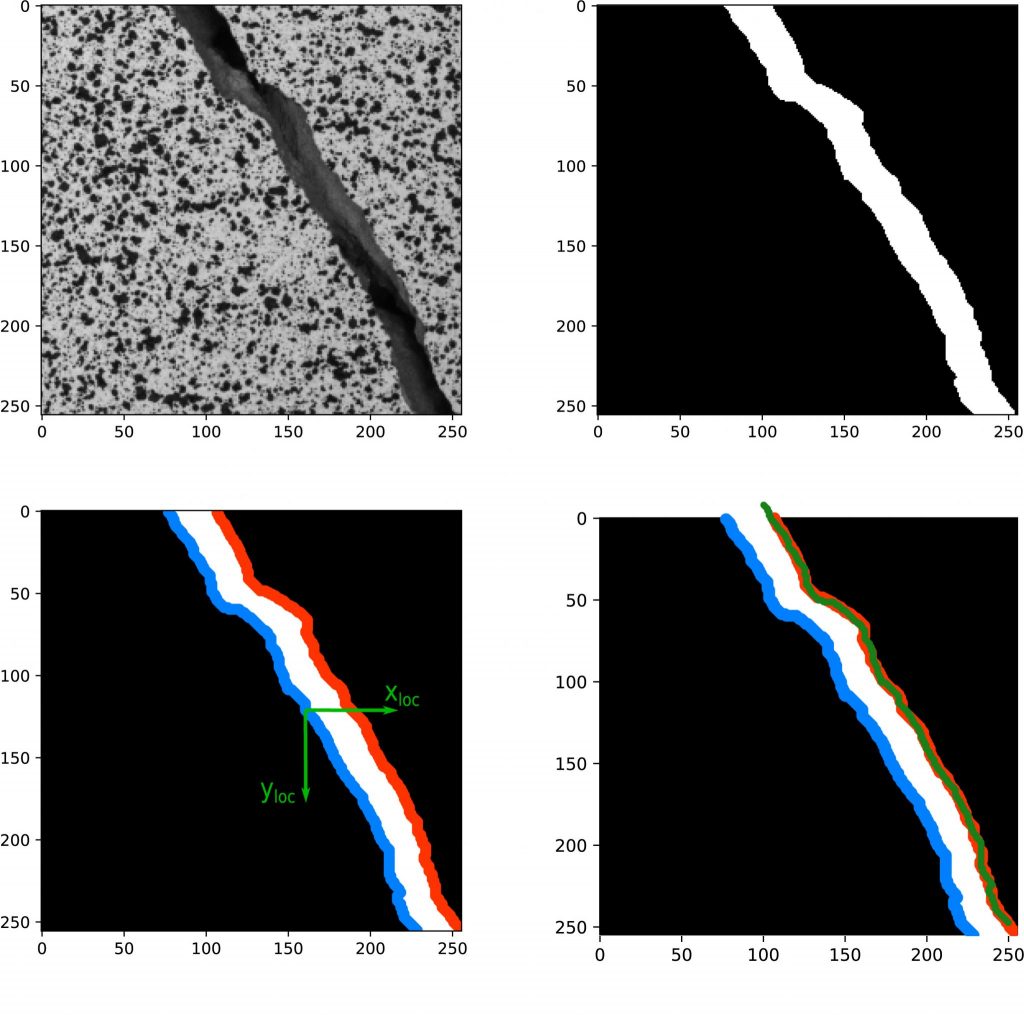Computing crack kinematics directly from imaged crack patterns
Understanding the relationship between the cause of damage and the subsequent structural behavior of infrastructure systems requires accurate characterization of the propagation of cracks, representing the evolution of the damage state. Traditional image-based approaches, such as digital image correlation (DIC), are invasive and limited primarily to controlled experiments because they require painting structure surfaces with random speckle patterns. In our research study, we proposed a simple, robust, and adaptable methodology for computing crack openings in Mode I or Mode II.
The proposed method takes a binary image from a semantic segmentation of a crack pattern as input. The binary image is used to detect the opposite edges along the crack, which are then registered using an optimization algorithm based on the Euclidean transformation model and non-linear least squares. As a final output, the method produces displacement maps in the tangential and normal directions to the crack skeleton.

To validate the methodology, we tested our new method with synthetic and real crack patterns. The results show that this methodology for determining crack openings is effective and does not require complex data. Moreover, the methodology is straightforward, robust, and adaptable, contributing to developing structural image-based damage assessments.
- Article:
- Determining crack kinematics from imaged crack patterns [journal link]
- Source code: [source code link]
- Dataset: [dataset link]
- Funding: This work was partially funded by the Swiss Data Science Center (SDSC).